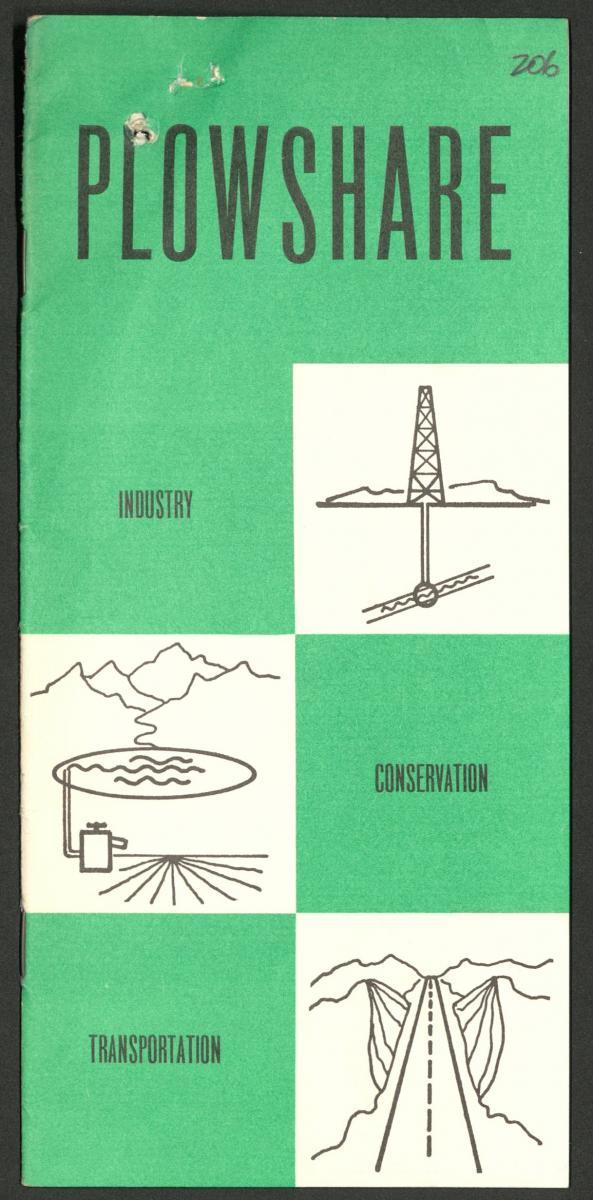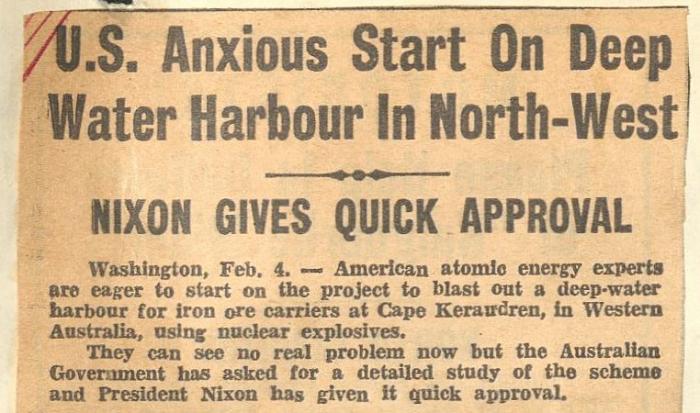“He shall judge between the nations, and shall arbitrate for many people; they shall beat their swords into plowshares…” (from the Book of Isiah)
Operation Plowshare - a Biblical reference that refers to weapons being converted for peaceful applications - was a US program in the 1960s to use nuclear explosives for industrial purposes such as rock-blasting. In the mid-1960s, it was being considered by the WA State government to create deep-sea ports and harbours in the North West of the State. Damien Hassan Senior Archivist at the State Records Office, checks the government files to see what they reveal…
The American Atomic Commission tested use of nuclear blasting for potential civilian use in the early 1960s as part of what became Operation Plowshare (sometimes referred to as Project Plowshare). These tests intended to limit the amount of radioactivity released through each explosion, to create what was referred to as “clean clouds”. By 1964, these tests had caught the attention of the WA government and Geraldton was considered a possible test site in which to apply the technology to deepen the harbor. Establishing a nuclear power generating facility in Geraldton was also considered (in fact, as far back as 1959).
Operation Plowshare marketing brochure, on file.
Attention subsequently turned to coastal areas further north and an assessment was made of different WA ports, including Cape Preston and Cape Kerauden. With an emerging iron ore boom, and with Japan commissioning larger shipping tankers requiring deeper sea ports in which to dock, the use of nuclear explosives to create new harbours was seriously investigated for many years. The speed and cost effectiveness at which such harbours could be created using atomic devices were major incentives (the cost of creating a harbor in this manner was estimated at $6 million).
The University of California proposed using five 100 kilowatt nuclear explosives in series below the seabed at Cape Kerauden to create the channel and harbor required. Each 100 kilowatt explosive was equivalent to about 100 million kilograms of TNT.
Kalgoorlie Miner, 05/02/1969, on file.
Due to an enthusiastic US senator, who was very supportive of the project back in California, the matter came to the attention of the newspaper press in early 1969 and went on to receive much media attention in the following months. Although public opposition to the project seemed muted, the project was soon abandoned. A disagreement about who would meet the cost of the project was cited as the reason why the project would not proceed.
To learn more about this story, read this recent article on ABC News.
For more stories from the State Library and the State Records Office, follow @statelibrarywa and @staterecordsofficewa on Facebook and @statelibrarywa on Instagram.
Recorded live on ABC Radio Perth on 17 November 2020.

